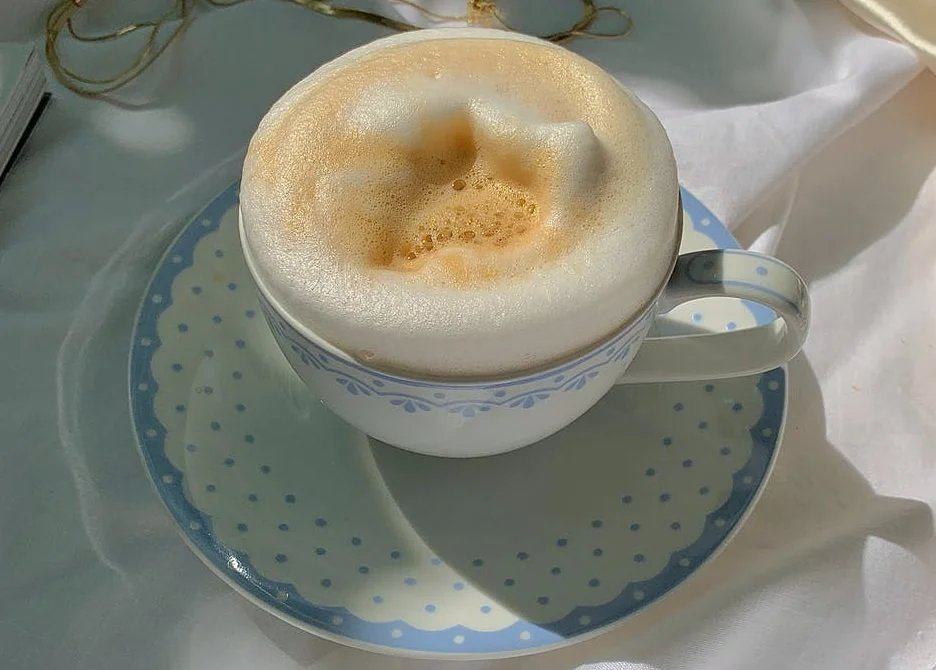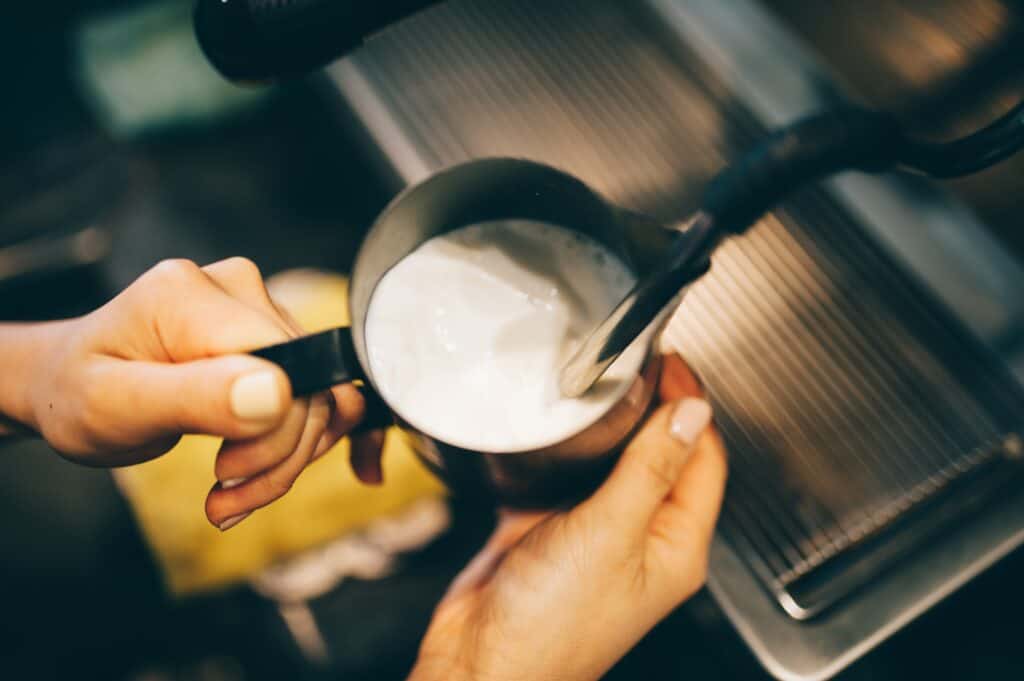The Art of Perfecting the Extra Dry Cappuccino: A Guide for Coffee Connoisseurs

As a coffee connoisseur, there’s nothing quite like indulging in the rich and creamy goodness of an extra dry cappuccino. The perfect balance of espresso shots, steamed milk and velvety foam takes skill and precision to master. It’s an art form that requires expertise and attention to detail at every step of the process. In this comprehensive guide, we’ll explore the art of perfecting the extra dry cappuccino – from selecting the right beans to mastering your froth game. Whether you’re a seasoned barista or just getting started with your home brewing setup, this guide will provide you with all the tools you need to create a truly exceptional cup of coffee. So grab your favorite mug and let’s dive into the world of extra dry cappuccinos!
The Importance of Quality Beans
The importance of quality beans cannot be overstated when it comes to making an extra dry cappuccino. High-quality beans provide a depth and complexity of flavor that simply can’t be replicated with inferior products. Beans should always be freshly roasted, as stale coffee will result in a bland and uninspiring drink.
Additionally, the bean variety also plays a crucial role in achieving the perfect cappuccino. For an extra dry version, opt for a light or medium roast with low acidity to balance out the rich foam. Arabica beans are widely considered superior due to their nuanced taste profiles and lower caffeine content.
In conclusion, investing in quality beans is essential for any serious coffee enthusiast looking to create the perfect extra dry cappuccino. By choosing fresh, carefully selected varieties with balanced flavors, baristas can elevate their craft from mere brewing to true artistry.

Perfecting Your Espresso Shots
Perfecting your espresso shots is the key to crafting a perfect cappuccino extra dry. Start by selecting high-quality beans and grinding them fresh before each use. The coffee to water ratio, temperature of the water, tamp pressure and duration are all critical factors in extracting a balanced shot of espresso. Experiment with different variables until you find what works best for you.
Once you have mastered your espresso shots, it’s time to focus on creating that velvety foam needed for an extra dry cappuccino. Properly frothing milk requires the right technique and equipment – aim for small, uniform bubbles without creating large amounts of texture or heat as this can result in burnt or scalded milk which can ruin your drink. To finish your masterpiece off, take care in pouring out your cappuccino and enjoy the deliciously rich results of all your hard work!
Steaming Milk to Perfection
Steaming milk to perfection is a crucial step in creating a delicious cappuccino. To achieve the ideal texture and temperature, it’s important to start with cold milk and a clean steaming pitcher. As you begin steaming, position the wand so that it hits the surface of the milk at an angle. This creates swirling motion which enhances foam development.
The goal is to heat your milk without scalding or burning it – ideally reaching a temperature between 150-155°F. Once your desired temperature is reached, wipe down your steam wand and give your pitcher a tap on the counter to remove any air bubbles from the foam. With these techniques mastered, you’ll be on your way to crafting perfect extra dry cappuccinos every time!

Achieving the Right Foam Consistency
Achieving the right foam consistency is one of the most crucial elements that go into creating a delicious extra dry cappuccino. The perfect balance between steamed milk and velvety froth can take some time and practice to achieve. However, it all starts with selecting quality beans, having consistent water temperature and pressure which will ensure even extraction during brewing.
When steaming your milk for an extra dry cappuccino, you want to aim for a texture that’s silky and smooth. This requires attention to detail when heating the milk – too hot or oversteaming can result in split milk which affects the consistency of your froth. To avoid this, use a thermometer to monitor the temperature of your steamed milk carefully while frothing simultaneously until reaching 60°C/140°F degrees maximum before adding directly on top of espresso shot(s). In short, mastering your foam game is more science than art – precision goes hand in hand with creativity here!
With these tips in mind, anyone can elevate their coffee game by crafting deliciously unforgettable cups like an extra dry cappuccino at home or behind any professional barista machine counter/job easily thanks to their improved froth-consistency knowledge base.
Understanding Milk Temperature
Understanding milk temperature is a critical part of creating the perfect cappuccino. The optimal temperature for steaming milk ranges between 140 and 160 degrees Fahrenheit, depending on the type of milk used and personal preference. Milk that is too hot can scorch or burn and result in a burnt taste, while under-steamed milk can create thin foam that quickly dissipates.
Properly steaming milk involves carefully monitoring its temperature throughout the entire process to achieve the desired texture and consistency. Expert baristas use thermometers to measure the temperature as they steam, adjusting their technique as needed to ensure consistent results with each serving. By understanding how different types of milk behave at various temperatures, you can master your frothing game and impress your friends with perfectly textured cappuccinos every time.
Pouring Techniques for a Beautiful Finish
When it comes to creating a beautiful finish for your cappuccino, pouring technique plays an important role. The key is to pour the milk slowly and steadily into the espresso, making sure to hold back some of the foam until the end. This helps create that distinct layered effect that makes a cappuccino extra special.
Another important factor is temperature – both the milk and espresso should be at their optimum temperatures for steaming and brewing respectively. You’ll want your milk slightly cooler than usual so it doesn’t curdle or scorch during frothing. And when you’re ready to pour, make sure your hand movements are smooth and steady – jerky or uncontrolled motions can cause uneven layers or spillage. With practice and attention to detail, mastering your pouring technique will help you achieve that perfect velvety texture every time!
Tips for Customizing Your Extra Dry Cappuccino
To truly customize your extra dry cappuccino, it’s important to start with the right espresso beans. Choose a high-quality blend that has been roasted to perfection. When selecting milk, opt for whole or 2% and ensure it is fresh and ice-cold. To achieve the perfect foam consistency, use a frother or steamer to whisk up microfoam with tiny bubbles.
When preparing your cappuccino, remember that an extra dry variation calls for more foam than milk. Aim for no more than one-third hot milk in relation to the espresso and thick layer of froth on top. For added flavor variations, experiment with syrups such as vanilla or hazelnut or add toppings like cocoa powder or cinnamon.
Remember that customizing your extra dry cappuccino is all about personal preference – don’t be afraid to play around with different ratios of coffee and milk until you find what works best for you. With time and practice, mastering the art of this beloved coffee classic will become second nature!





